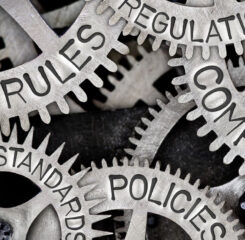Living with COVID, Week 10
This Week’s Highlights:
Volume Eighteen: Air Date 5.23.22. “Resources for the Road Ahead”
Today, I discovered a great web resource from McKinsey’s that covers the broad landscape of COVID-19 from ‘where we’ve been, where we are, and where we are going.” The think tank project offers articles, podcasts, statistics and infographics on a range of topics, including landing pages for:
· Living with COVID 19
· Healthcare
· People & Organizations
· Digital
· Operations
· Sustainable, Inclusive Growth
One interesting discussion on endemicity included a definitional timeline that I’ve not encountered yet. Essentially, it offers three distinct definitions for endemicity. These are:
· “Individual Endemicity : this occurs when fluctuations in disease burden cause only minimal change in individual’s economic and social behavior.
· Epidemiological Endemicity : this occurs when COVID-19 exists at a predictable level that does not require society-defining interventions.
· Economic Endemicity : this occurs when epidemiology sustainably decouples from economic activity and economic impacts largely resolve.”
Each definitional construct of endemicity follows the other across time, illustrating the evolving nature of endemicity overall.
I’d like to start unpacking this compilation of thought work and resources by tapping into one article on the site today: Three Keys to a Post Pandemic Recovery. Admittedly, there are so many good ‘sound bites’ from this article that it’s a challenge not to just read it outright. I’ll try to summarize what’s written, but I do encourage you to go read the entire article; it’ll take you about 5 minutes.
The authors begin by expounding on the compounded challenges of COVID, and state that this could be a watershed moment for policy and strategy. Quote, “At this juncture, our recovery’s success is still not assured. History shows that in times of disruption, resilience depends on adaptability and decisiveness.”
We should move from a defensive, short term responsiveness to a sustainable, inclusive growth agenda, say the authors. To do this, organizational leaders are to engage in holistic thinking that considers and plans for the many interdependencies that face society today. Three strategies are offered:
- Public- and private-sector leaders need to take a broad view of the resilience agenda.
This requires planning that includes the intersections of the workforce crisis, supply chain failures, inflation and inequities as well as the broader issues of climate change, societal tensions and geopolitical dynamics.
- Strategies and structures have to be designed for flexibility and speed.
“The COVID-19 pandemic… has shown that we need more timely information, up-to-date strategic agendas, and shorter decision cycles…More value is placed on anticipating disruptions and trends than in developing detailed budgets and plans.”
- Beyond building resilience in business and the economy, public and private leaders must also build societal resilience.
The focus here is on the restoration and sustainability of the environment, correcting for societal inequities, enriching low-income countries and improving the lives of historically marginalized populations. “For companies, the adoption of environmental, social, and governance (ESG) standards and metrics can help optimize strategy for positive societal impact.’
Truly, there is rich content and much to think about from this McKinsey resource page; we’ll take another look next week.
Volume Nineteen: Air Date 5.25.22. “The Subvariant and Animal Hosts”
While everyone is wishing we could just move on from the COVID-19 pandemic, cases and hospitalizations are rising again and a new subvariant of omicron accounted for 57% of cases last week. As researchers work to figure out the longer-term trajectory of this virus, they are considering the role animal hosts might play.
In year three of the pandemic, scientists have confirmed that the virus believed to have first spilled over to humans from bats or possibly pangolins has already spread to at least 20 other animal species, including big cats, ferrets, North American white-tailed deer and great apes. To date, incidents of animals infecting humans are rare. Usually, the transmission is from humans to animals. Only three species — hamsters in Hong Kong, mink in the Netherlands and, possibly white-tailed deer in the United States and Canada — have transmitted a mutated, albeit mostly benign, version of the virus back to humans. But those cases are spurring concern.
Researchers are investigating whether animals infected with the coronavirus might become reservoirs for the evolution of new variants that might jump back into humans — an issue with huge implications for both human and animal health.
The World Health Organization warned in March that animal reservoirs could lead to “potential acceleration of virus evolution” and new variants. The agency noted the large numbers of infected animals, and it urged countries to increase their monitoring of mammalian species for SARS-CoV-2. The CDC this year also endorsed efforts to track the virus in animals, even as it described the risk of transmission to humans as “low.”
Most new variants are simply scientific curiosities, and they die out. The challenge for scientists is to create a system to identify the dangerous ones — the ones that are more transmissible, more deadly or more likely to break through vaccines — and attempt to halt their transmission.
In the span of more than two years, the coronavirus itself has been evolving faster than most anyone expected. The environment in which these variants are forming is likely one that allows the virus to live longer and thereby make more copies of itself, increasing the prospect of new mutations.
One leading theory is immunocompromised patients, such as those with cancer or HIV, who can harbor the infection for many weeks or months, as compared with mere days for most people. But another more daunting possibility is that the virus is finding hosts among the more than 1 million animal species that inhabit Earth.

Most Recommended
October 15, 2025
 Shutdown Week Three: Impact of Ongoing Closure on Affordable Housing
Shutdown Week Three: Impact of Ongoing Closure on Affordable Housing
December 10, 2025
Fiscal Year (FY) Funding 2026
October 07, 2025
Immigrant Workforce Matching Program Brings Workforce Relief
Recently Added
December 09, 2025
Collaborating Around the Globe to Teach and Learn
December 08, 2025
MedPAC: 2026 Work Plan on PAC Priorities
December 08, 2025



